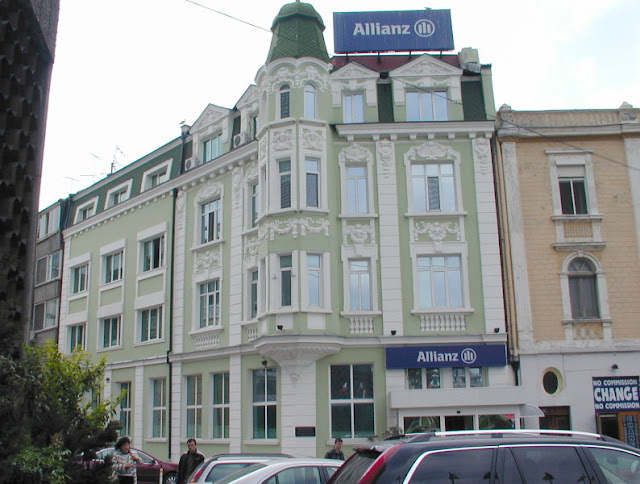Architecture of Burgas
Burgas (Bulgarian: Бургас, sometimes transliterated as Bourgas) is the second-largest city and seaside resort on the Bulgarian Black Sea Coast with a population of 197,301 inhabitants according to Census 2011. It is also the fourth-largest by population in Bulgaria, after Sofia, Plovdiv and Varna. It is the capital of Burgas Province and an important industrial, transport, cultural and tourist centre.
Aleko Bogoridi Boulevard
Surrounded by the coastal Burgas Lakes and located at the westernmost point of the Black Sea, the large Burgas Bay, Burgas has the largest and most important Bulgarian port. Today, it is a key economic, cultural and tourist centre of southeastern Bulgaria, with the Burgas Airport serving the resorts of the southern Bulgarian coast.
Alexander Severus coin celebrating the Flavian colony of Deultum.
Name
The name Burgas comes from the Greek word "pyrgos" (Greek: Πύργος), meaning "tower" or "fortress".
Street scene from the centre of Burgas
History
During the rule of the Ancient Romans, near Burgas, Debeltum (or Dibaltum) was established as a military colony for veterans by Vespasian. In the Middle Ages, a small fortress called Pyrgos was erected where Burgas is today and was most probably used as a watchtower. It was only in the 17th century that a settlement named Ahelo-Pirgas grew in the modern area of the city. It was later renamed to Bourgas and had only about 3,000 inhabitants. The city was a township in İslimye (Sliven) sanjak in at first Rumelia Eyalet, after that in the Silistra Eyalet and Edirne Eyalet before the liberation in 1878. It was a department centre in Eastern Rumelia before incorporated in the Principality of Bulgaria in 1885.
Bustling street in Burgas
Later, it became a major centre on the southern Bulgarian Black Sea Coast and a city of well-developed industry and trade. A number of oil and chemical companies were gradually built. Salt and iron are also mined and traded abroad.
The Church of Saint Cyril and Methodius in Burgas.
In the early 19th century Burgas was depopulated after raids by kurzdhali bandits. By the mid-19th century it had recovered its economic prominence through the growth of craftsmanship and the export of grain.
In the 19th century, with the increasing maritime trade in the Black Sea, Burgas became one of the most important port cities. However, it has lost some of its importance with the shift of the trade between Balkans-Istanbul-Trabzon to Southern port cities with the construction of Salonica-Istanbul railways. In 1903, the Burgas Central railway station opened, giving an additional boost to the city's expansion. Burgas, unlike many other Bulgarian cities, was not much affected by Communist-type urbanization and has kept much of its 19th- and early-20th-century architecture.
Today the local port is the largest in Bulgaria adding significantly to the regional economy. Burgas also holds annual national exhibitions and international festivals and has a vibrant student population of over 6,000 that add to the city's appeal. The historical society also maintains an open-air museum at Beglik Tash.
Several countries have consulates in Burgas, among them Turkey, Belarus, Romania, Russia and Ukraine.
Burgas Peninsula on Livingston Island in the South Shetland Islands, Antarctica is named after the city of Burgas.
Main sights
Ø Burgas Regional Historical Museum
Ø Ethnographic Museum
Ø Museum of Nature and Science
Ø Art Gallery
Ø Opera House
Ø International Folklore Festival
 06:34
06:34
 homesweethome
homesweethome












 Posted in:
Posted in: 








0 意見:
Post a Comment